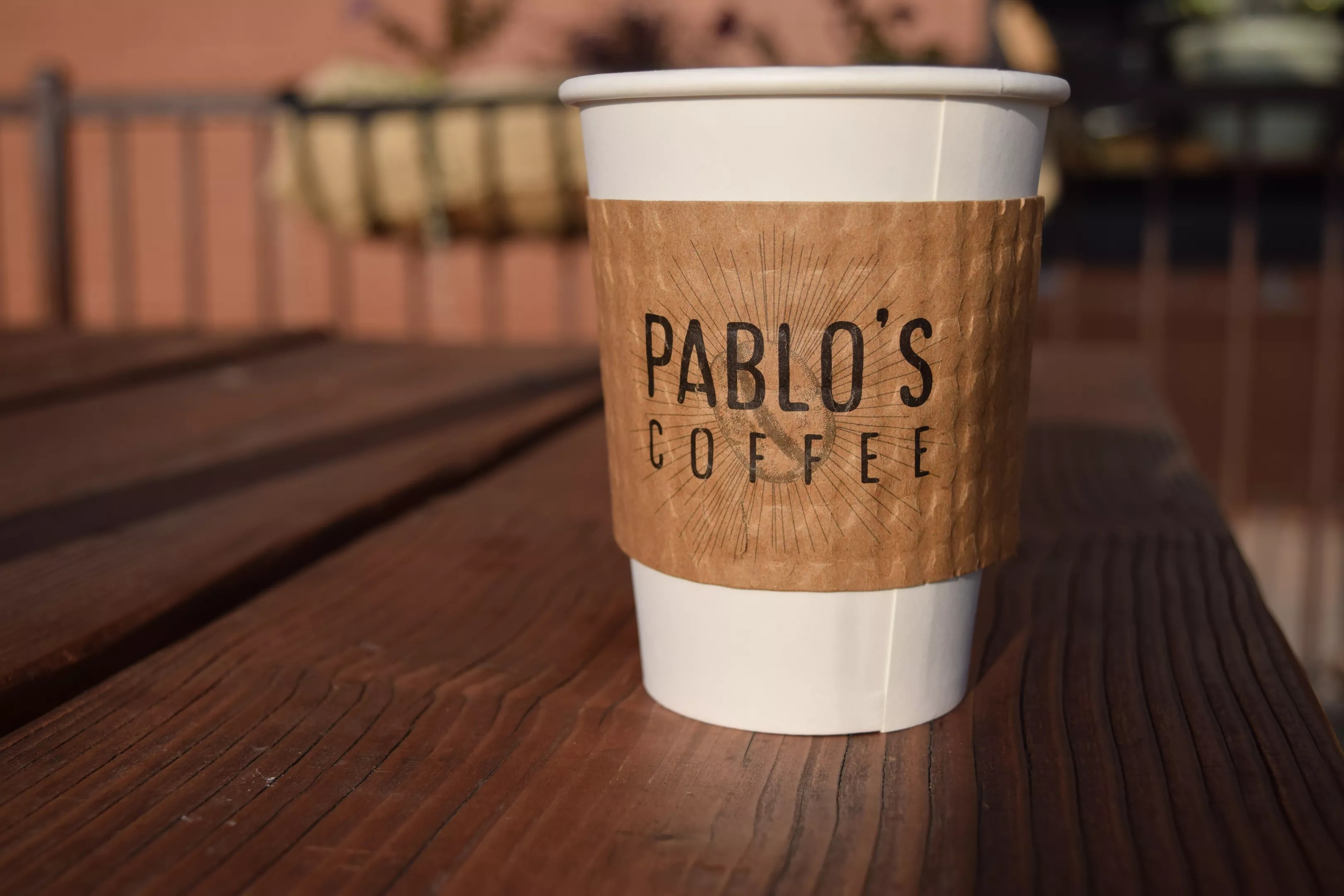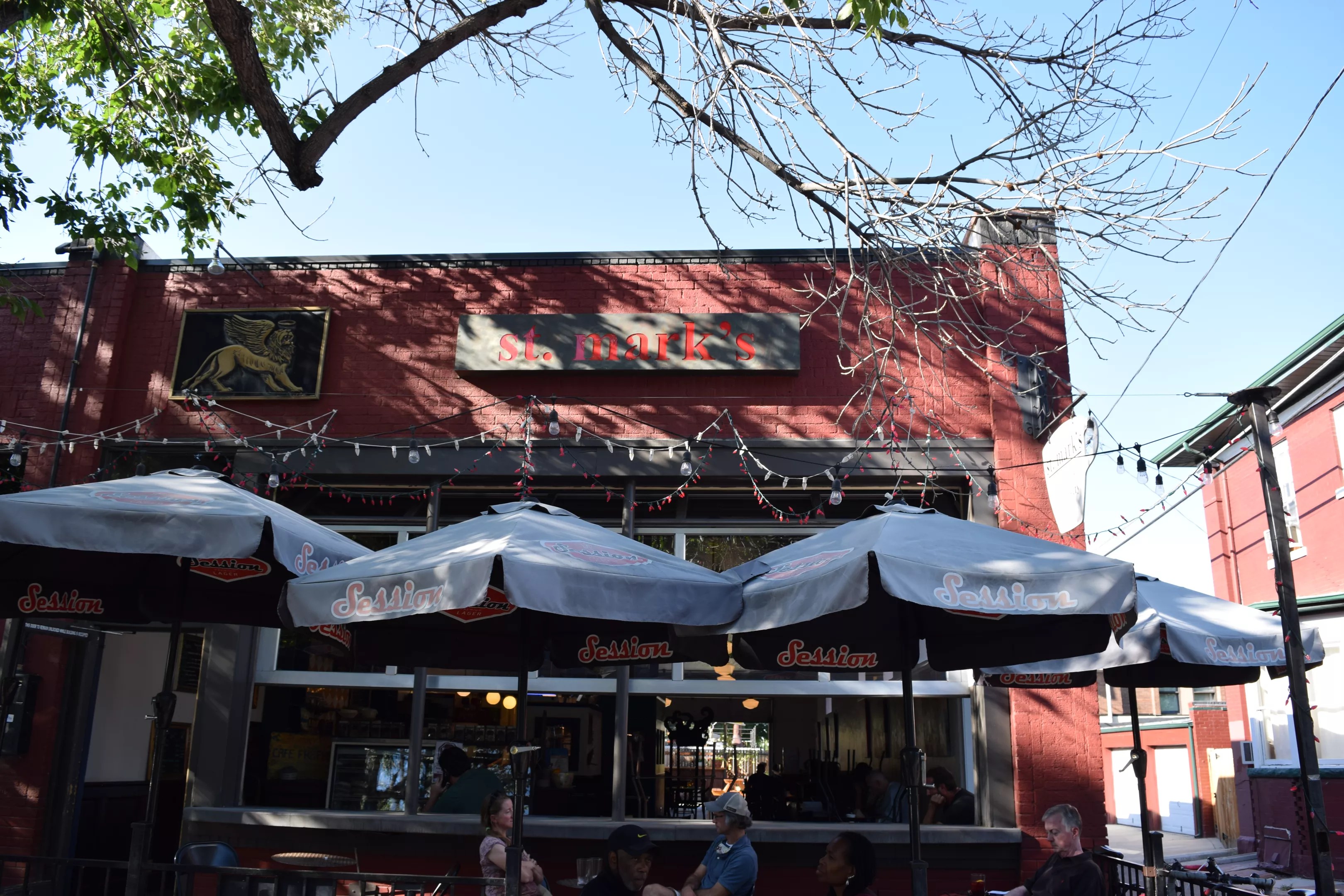
Claire Duncombe

Audio By Carbonatix

The owner of Pablo’s, Chris Conner, says his coffee shop focuses on good-quality coffee beans over confectionary drinks.
Claire Duncombe
With fall comes the smell of wet earth and the sound of dried leaves scattering across the pavement. The mornings are cool and jackets are buttoned. There are myriad potential autumnal associations, but in the past seventeen years, a new seasonal hallmark has grown to prominence. That, of course, is the pumpkin spice latte.
Pumpkin spice lattes are so ubiquitous come fall that few fans realize that the drink was only developed by Starbucks in 2003, though variations of the syrupy concoction have spread from coffeeshop to coffeeshop in the years since. But aside from Starbucks, few coffee establishments associate the latte with the reason coffee drinkers come to their stores, even in the fall.
If a customer heads into Pablo’s Coffee wanting their drink to taste like pie, “I’m probably going to say ‘You should get a pumpkin spice latte’” somewhere else, owner Chris Conner reasons. “And if [they say] ‘I want it to taste like coffee,’ then I’ve got you covered.”
Conner opened Pablo’s in 1995, and he’s seen a number of coffee fads come and go over the past 25 years. He remembers a time during the late ’90s when they had “thirty different flavored syrups…everything from pistachio to Irish cream.” But then, he says, “it warmed toward people just wanting drip coffee, and now people just want small lattes.”
He thinks his customers’ change in preference is the result of better-quality coffee beans. “In 1995, the coffee wasn’t nearly as good,” he explains. But with the rise of the Internet, growers and roasters have been able to have a more direct exchange of information. These days, the beans are better and they’re easier to find.
Now, Conner says, he sources beans from “all around the equator. Anywhere they grow it. We source green coffee, import it and roast it to bring out the flavors of the coffee itself rather than turn it into a confectionary thing. We don’t blend things up or put whipped cream on top.”
However, he says he understands the emotional connection a pumpkin spice latte can have as a seasonal milestone. “We didn’t do it because we’re primarily a coffee roaster, and we’re trying to present our coffee as coffee.” He wants his customers to come in for all the nuance and flavor a good cup of coffee inherently contains.

St. Mark’s Coffee House has been around since 1993 and continues to grow its customer base.
Claire Duncombe
Across town, Tina Pappas, co-owner of St. Mark’s Coffeehouse, says she doesn’t remember when pumpkin spice lattes first became popular. St. Mark’s has been around since 1993, and she’s found that “the years just mush into each other. I know when [they] first started, we didn’t do anything about it.”
“We had a very simple menu, and still have a very simple menu,” Pappas continues. St. Mark’s takes inspiration from traditional Italian espresso, and although they have a pumpkin spice syrup, it’s not one of their most popular beverages. Pappas says the coffee shop “is more about the community. You want to have a good product, but ultimately you want people to feel welcome.”
When Pappas started St. Mark’s with her husband, Eric Alstad, coffee culture was completely different than it is today. “You went to cafes like you went to a bar,” she explains. “You’d meet people, and you’d talk.” That sort of environment created a St. Mark’s family where Pappas and Alstad were able to see customers grow from kids to adults with families of their own.
And that sense of togetherness lingers. Pappas thinks that even though (during normal times) many customers go to St. Mark’s to do work, they also go to be around others. “Even when people are on the computer and not interacting, they’re still there, in a sense, to be a part of the community,” she says.
Currently, people don’t have access to that coffeehouse social scene because of COVID restrictions, and Pappas hopes that when the world returns to normal, people will cherish the connections in a new way. It’ll be like revisiting a good memory, a taste of nostalgia, she notes.
And nostalgia is what drives coffee drinkers toward pumpkin spice lattes every fall.